The nature reserve “Kabile” has increased significantly the number of tourists
Anita Valentinova, 14.03.2008
“The total number of tourists, who have visited The National archeological nature reserve “Kabile”, has increased significantly during the last years.” -stated an archeologist of the Local History Museum in Yambol.
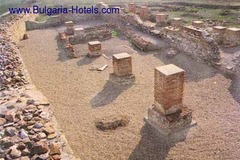 Kabile is a village in Southeast Bulgaria. It is situated in the Tundja district, Yambol Province. The ancient city with the same name, which have been situated in the same place, once was a capital of the Thracian state. It was the most important and the biggest ancient town in the Thrace. Kabile village is situated at 3 km northwest of Yambol. At 1,5 km northern of K. is situated the last hill of the mountain Sredna Gora - Zaychi vryh (Tavshan tepe).
The area, where was located ancient Thracian town Kabile, was declared to be a nature-reserved place, a cultural monument of national importance and national archeological and architectural nature reserve in 1965.
Now there isn’t any constructed village on that area. First archeological investigations was made by Prof. Bogdan Filov in 1912.
Kabile is a village in Southeast Bulgaria. It is situated in the Tundja district, Yambol Province. The ancient city with the same name, which have been situated in the same place, once was a capital of the Thracian state. It was the most important and the biggest ancient town in the Thrace. Kabile village is situated at 3 km northwest of Yambol. At 1,5 km northern of K. is situated the last hill of the mountain Sredna Gora - Zaychi vryh (Tavshan tepe).
The area, where was located ancient Thracian town Kabile, was declared to be a nature-reserved place, a cultural monument of national importance and national archeological and architectural nature reserve in 1965.
Now there isn’t any constructed village on that area. First archeological investigations was made by Prof. Bogdan Filov in 1912.
The average number of tourists, who has visited the nature reserve, is around 3500. The local History Museum will launch its strategy to make “Kabile” more attractive. This Bulgarian landmark is quite enchanting and is developed to be successful cultural tourism destination. The national archeological reserve “Kabile” is equipped with the necessary infrastructure, all archeological stuff, a large historical museum (its area is around 1000 km2), paths 3km. long and three places for having a rest. The renewed archeological exposition which reflects the archeological richness of the valley of river Tundja on the area of Yambol district is opened in “Kabile”.
 Kabile is a village in Southeast Bulgaria. It is situated in the Tundja district, Yambol Province. The ancient city with the same name, which have been situated in the same place, once was a capital of the Thracian state. It was the most important and the biggest ancient town in the Thrace. Kabile village is situated at 3 km northwest of Yambol. At 1,5 km northern of K. is situated the last hill of the mountain Sredna Gora - Zaychi vryh (Tavshan tepe).
The area, where was located ancient Thracian town Kabile, was declared to be a nature-reserved place, a cultural monument of national importance and national archeological and architectural nature reserve in 1965.
Now there isn’t any constructed village on that area. First archeological investigations was made by Prof. Bogdan Filov in 1912.
Kabile is a village in Southeast Bulgaria. It is situated in the Tundja district, Yambol Province. The ancient city with the same name, which have been situated in the same place, once was a capital of the Thracian state. It was the most important and the biggest ancient town in the Thrace. Kabile village is situated at 3 km northwest of Yambol. At 1,5 km northern of K. is situated the last hill of the mountain Sredna Gora - Zaychi vryh (Tavshan tepe).
The area, where was located ancient Thracian town Kabile, was declared to be a nature-reserved place, a cultural monument of national importance and national archeological and architectural nature reserve in 1965.
Now there isn’t any constructed village on that area. First archeological investigations was made by Prof. Bogdan Filov in 1912.  Member of:
Member of:
















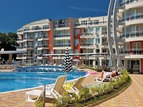

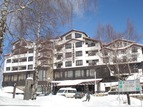

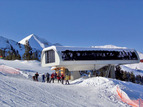
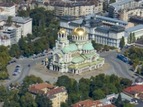





 Touroperator
Touroperator
